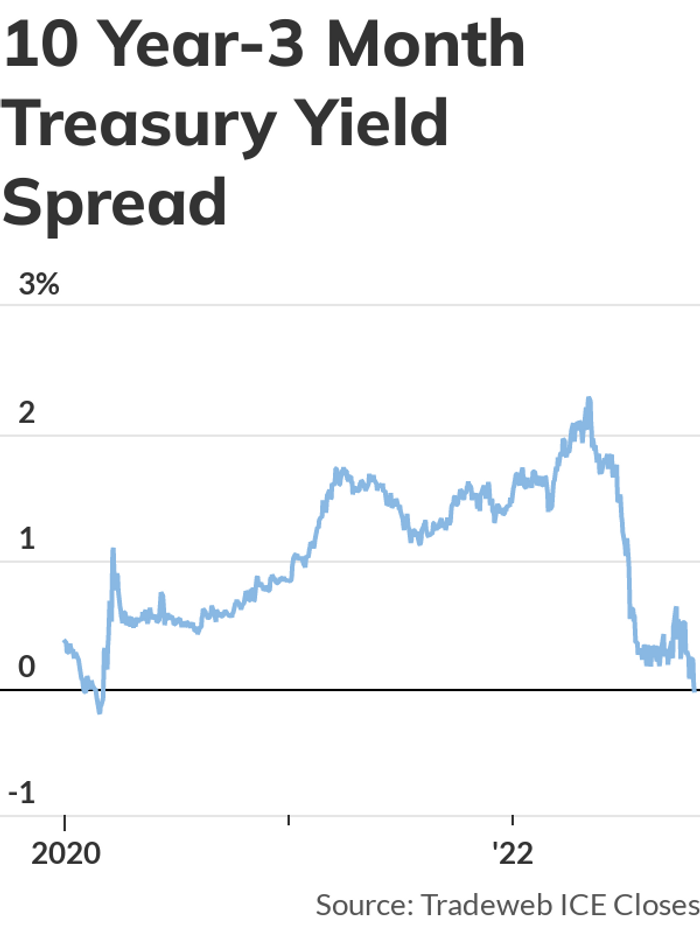Signs of an impending U.S. recession keep piling up, and now another widely followed bond-market measure is starting to flash its own warning.
It’s the spread between yields on the 3-month Treasury bill
TMUBMUSD03M,
and the 10-year note
TMUBMUSD10Y,
which briefly turned negative on Tuesday and on-and-off again on Wednesday. It was minus 2.1 basis points as of 3 p.m. New York time, the first time that the spread has finished the U.S. trading session below zero since March 2, 2020, at the onset of the U.S. Covid-19 pandemic, according to Tradeweb.
Until now, those who doubted the world’s largest economy would tip into recession were at least able to point to this spread. It managed to stay above zero much of this year, even after one of its counterparts — the spread between 2- and 10-year Treasury yields — went negative in July and remained there for months. But on Tuesday and Wednesday, things changed: The 3-month rate traded above the 10-year yield. That left the spread between the two, which is calculated by subtracting the shorter-term rate from the longer-term one, negative as well.

Source: Tradeweb
Campbell Harvey, the Duke University finance professor who pioneered the use of bond-market yield curves as a predictive tool, said the 3-month/10-year spread needs to stay below zero through December in order for him to be confident that a recession is on the way.
“A one- or two-day inversion is not enough,” Harvey said via phone on Wednesday. “Just because it inverted yesterday and today is not sufficient to go on the record and say it’s flashing ‘code red,’ but it’s definitely ‘code orange.’ “
Still, he said, the significance of the moves on Tuesday and Wednesday is that “the countdown is on,” and the Federal Reserve’s need to keep hiking interest rates in order to contain inflation “is driving the yield curve in ways that are also potentially pushing the economy off the cliff in terms of a recession.”
Meanwhile, the overall flatness of the Treasury curve — in which long-term yields are trading close to shorter ones — “means slower growth.”
Typically, when the bond market believes that the U.S. economic outlook is bright, traders reflect that optimism through higher long-term yields — which essentially steepens the Treasury curve. On Wednesday, though, the shorter 3-month rate periodically rose to as high as 4.102%, as traders continued to anticipate a 75-basis-point Fed rate hike for November, as well as another increase in December. Meanwhile, the 10-year rate fell to as low as 3.997%, at one point. Together, those moves resulted in further inversion of the Treasury curve.
Interestingly, the inversion of the 3-month/10-year spread is occurring at a time when a batch of soft U.S. is raising hopes that policy makers might be able to back off their campaign of aggressive rate hikes at some point. Fed-funds futures traders have been toggling back and forth, for example, between expectations for a 50-basis-point or 75-basis-point rate hike for December.
Other warnings of an impending economic downturn emerged last week, when Bloomberg Economics model projections estimated a 100% chance of a U.S. recession within the next 12 months.
On Wednesday, major U.S. stock indexes finished mostly lower, with the S&P 500
SPX,
and the Nasdaq Composite unable to shake off disappointing earnings results from tech companies.



